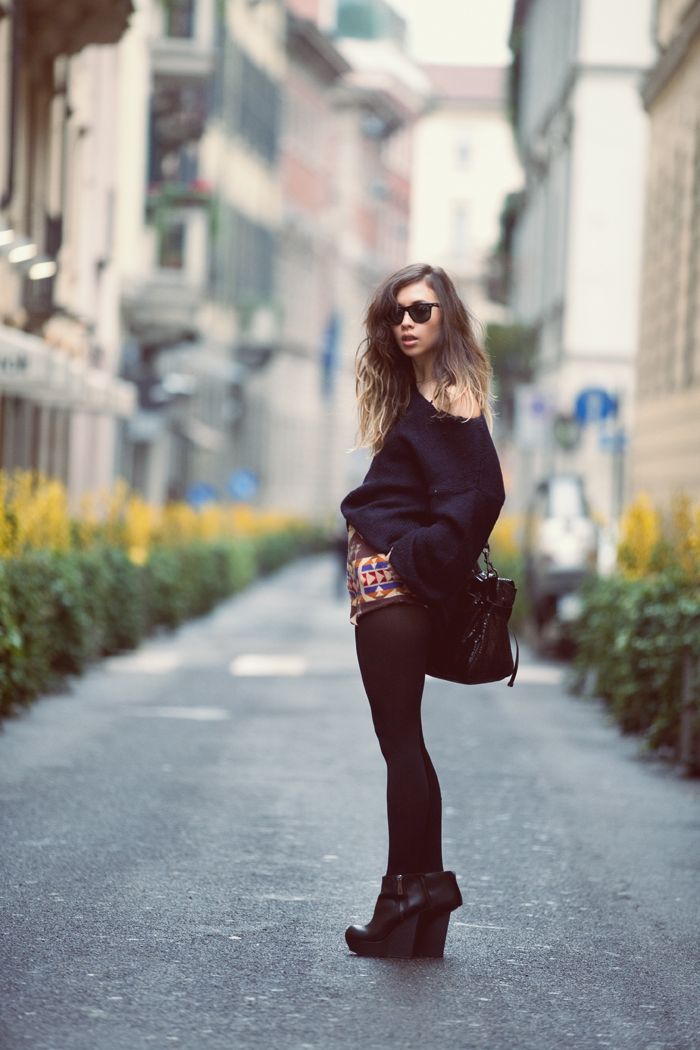Looking at the picture, I can't help wondering whether at least part of what we're seeing may not be a result of post-processing rather than just shallow depth of field. Blurring that comes from being out of focus is basically progressive -- i.e., the farther something is from the focus point, the more blurred it gets.
Looking at this picture, however, that doesn't seem to be the case. For example, if we look at the far left edge of the picture, we see that the details of the building are quite blurred even though the geometry suggests that it's not much farther away than the subject. Compare that to the building at the far end of the street. Based on the geometry, that building must be much farther away from the focus point -- but if anything, it appears less blurred than the buildings at the edge that are relatively close to the focus point.
Likewise, looking at the pavement (or whatever) near the models' feet, it looks like there's noticeably more depth of field to the left than the right, and the area that's sharp looks to me like it's quite curved -- right in front of her, it gets quite blurry just a few inches from her feet, but off to the left and right stays sharper much closer to the camera. By the left an right edges, it's reasonably sharp right down to the lower border. While some curvature of field is common, this goes far beyond what I'd expect from any lens, to the point that post-processing looks to me like nearly the only reasonable explanation.
It looks to me like the photographer decided the subject wasn't sufficiently isolated as it was originally shot, and he adding some blurring of some of the nearer parts without doing blurring of the farther parts to match.
Note that I'm not trying to condemn the original photograph or photographer -- I'm just trying to point out that if you really want to duplicate the look of this picture, it may well take more than just selecting the right lens/body combo to reduce the depth of field. Of course, picking a good model helps too (and helps keep all but the most dedicated nutcases like me from paying any attention to the blurring of the buildings in the background...)


